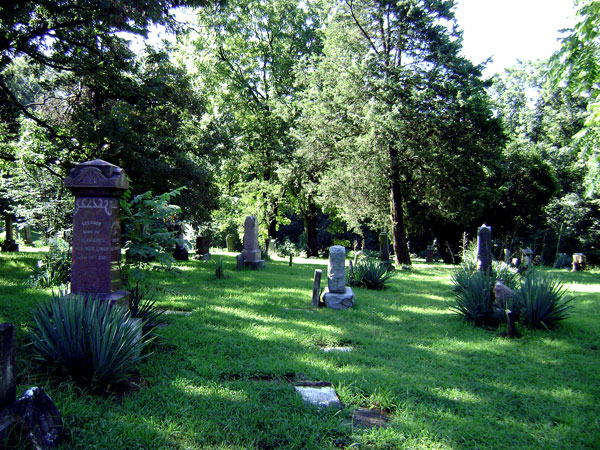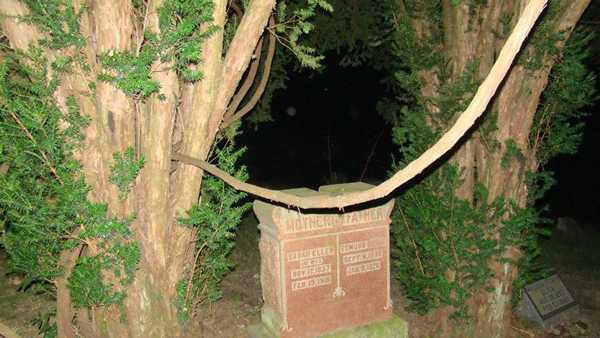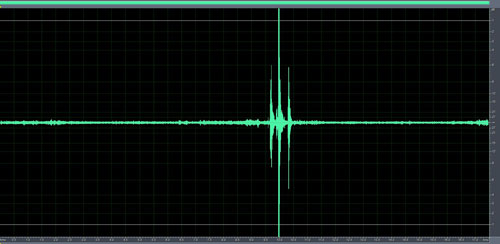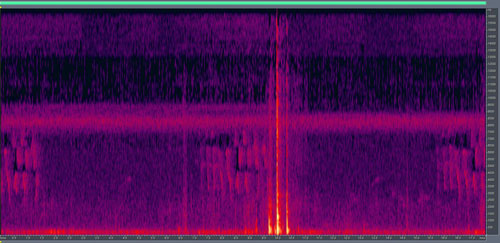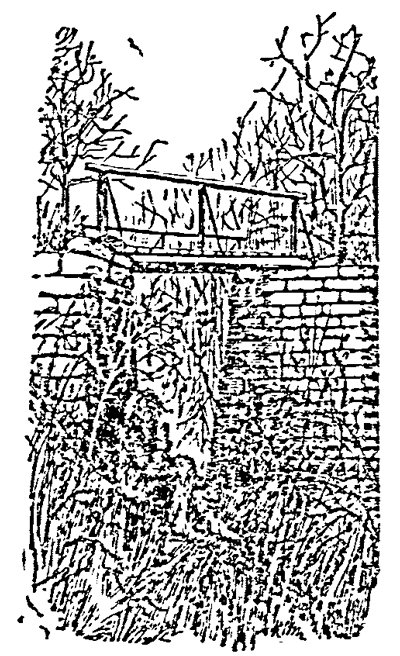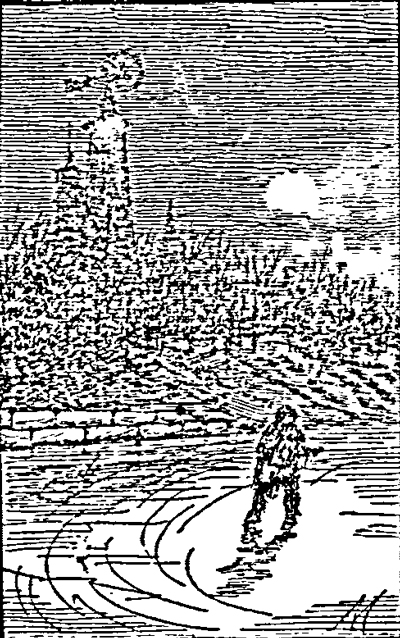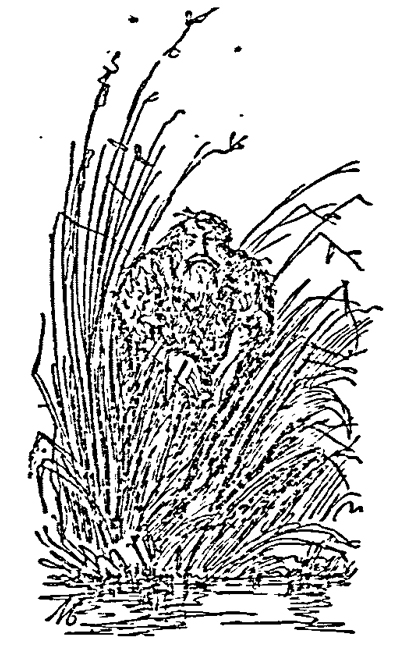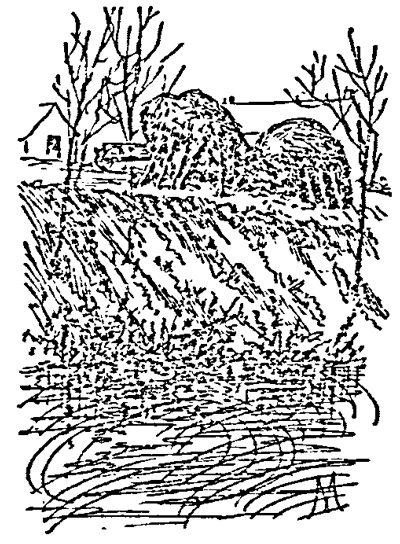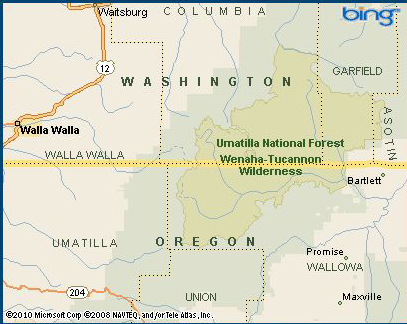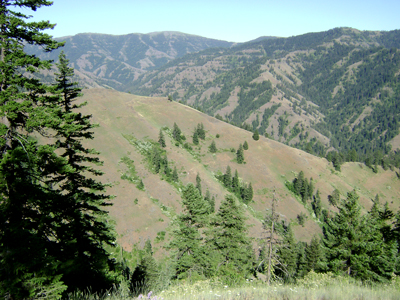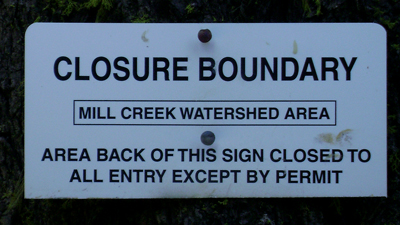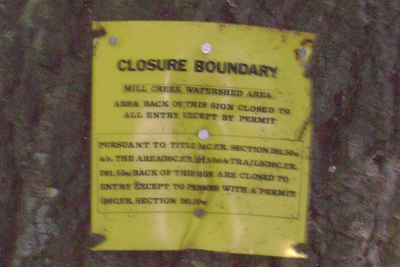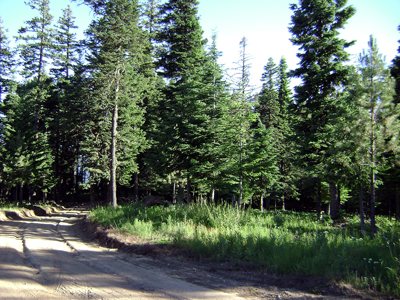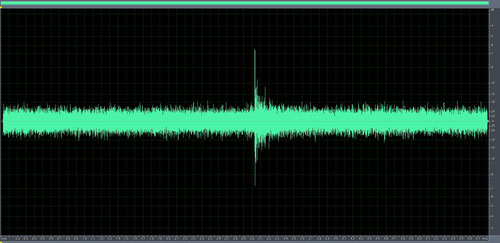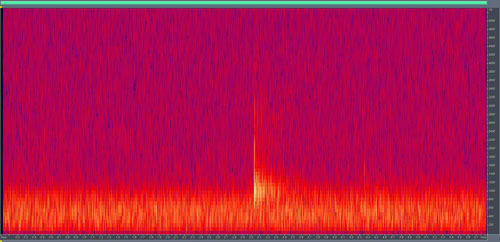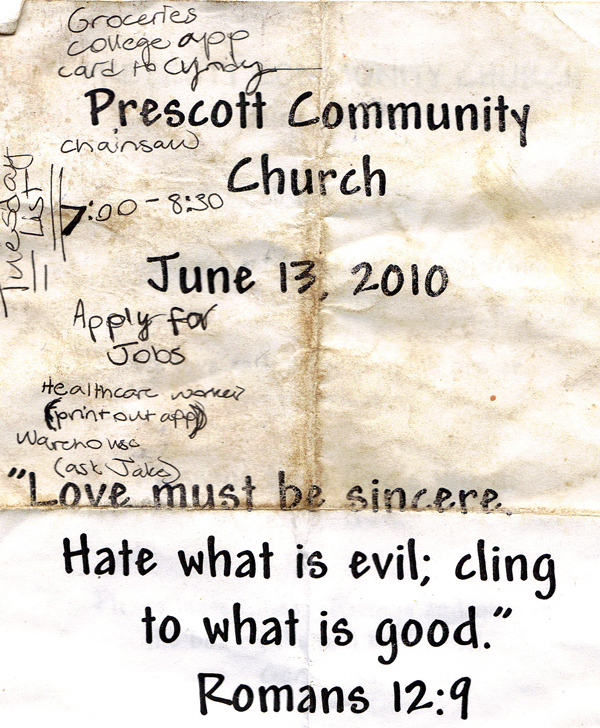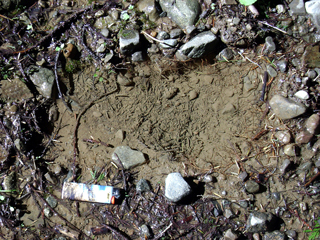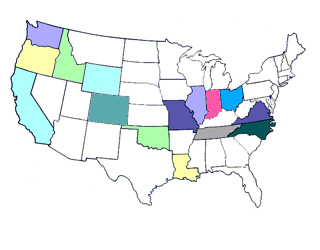Cemeteries and Squatches, Pt. 2
Sighting reports continue to come in involving possible sasquatch activity in and around cemeteries. It has always been my opinion that there is nothing special about cemeteries other than the fact that squatches can come in close and observe humans and still be able to stay hidden in the dense undergrowth. In Illinois there are thousands of small rural cemeteries located in the woods.
[photo by Stan Courtney]
A remote cemetery in rural Shelby County, Illinois
I wrote previously on this subject last summer. Please see: Cemeteries & Ghosts & Squatches.
Chris Mason recently contacted me and related the many things he and other paranormal investigators have been hearing at a small rural cemetery in Sheby County, Illinois.  So on the 7th of August, 2010 I spent the night listening and recording with Chris and several of his friends in a wonderful wooded setting. I have been unable to find any previous references to sasquatch sightings in this Central Illinois county.
[photo by Larry Wilson]
The following is a short on-site interview with Chris Mason and Larry Wilson, both members of Ghost Magnet. They tell of some of the unusual sounds heard over the last several years at this location. Larry relates that interviews with cemetery caretakers reveal strange events, such as equipment being moved around. The authorities also have problems keeping caretakers, the common complaint being “the feeling of being watched”.
Click here to listen to the interview: Cemeteries and Squatches, Pt. 2
In summary some of the unusual sounds and events have been:
Woodknocks
Logs being thrown
Screams
Loud whistles
Yells
Voices
Drumming
Walnuts being thrown at investigators.
Bluff charges
While walking near the cemetery Chris found what appears to be a large barefoot footprint, 14 inches long and 6 inches wide. I could see all the imprints from the toes. The print, which was in mud alongside the road appeared to be several weeks old.
[photo by Chris Mason]
The “barefoot” print was 14 inches by 6 inches.
In conclusion: A big thank to Chris Mason and Larry Wilson for their hospitality. Although I was not personally able to hear anything unusual the finding of the lone footprint was a great find. I left two remote recorders running in the woods and picked them up a week later. I recorded lots of singing birds. The only thing unusual was the container that I keep my recorder in had the lid pulled up on it. This was during the daytime.
Click here to listen to the sound clip:Â Lid Slammed 1
Waveform View
Spectral View
Media Article – Cook County, Illinois – # 2
Wednesday, December 31, 1890
MAYWOOD’S WHAT-IS-IT.
Chicago Inter Ocean
Infra-sound in the Blues
Disclaimer – many researchers have experienced and discussed what they assume to be infra-sound associated with sasquatch encounters.  I am not knowledgeable enough on the subject of infra-sound nor do I have scientific evidence to prove what I experienced on the evening of the 18th of July, 2010 in the Blue Mountains of southeastern Washington State. With that in mind I will attempt to relate what I experienced.
——————————————————————————————————————
While on an expedition in the Washington Cascades I mentioned to Kevin Jones that I was going to camp in the Blue Mountains near where Paul Freeman had procured a possible sasquatch video. Vance Orchard wrote two volumes about bigfoot in this area, ” Bigfoot of the Blues” in 1993 and  “Walla Walla Bigfoot” in 2001. Kevin reminded me that the Blues was where he had experienced several infra-sound episodes.  I asked if he would mind sharing with me his campsite location as I would like to camp there.  He showed me on a map the exact location and I entered it into my GPS.
I would guess that I was a little nervous as I drove up to the campsite. Part of the dirt road was so steep that I slipped my Jeep Rubicon into low 4-wheel drive to finish the climp. My ancestors had traveled to Oregon on the Oregon Trail in 1880 and eventually settled in the Blues on the Oregon side. I have often wondered if there were stories of the original pioneers that had been whispered but never written down.
General location of one section of the Blue Mountains that straddles the Washington-Oregon line. On the map one can see the little settlement of Promise that my great-great-grandfather helped found in pioneer days.
At the campsite overlooking the Mill Creek Watershed Area that is “off-limits” to protect the water supply for Walla Walla, Washington.
Several different types of signs that warn the public to stay out! The watershed is the area Paul Freeman had been hired to patrol by the Forest Service when he had his first bigfoot sighting.
The opposite side of the road looking into much denser stands of pines.
(photo taken back home showing the external loud speakers)
I would be spending the night in my Jeep Rubicon specially outfitted with outdoor speakers and an extra stereo and amplifier system. When I arrived around 4 p.m. I was excited that the site afforded both an open expanse into the watershed as well as a heavier wooded area on the opposite of the road. If anything was going to approach during the night it had plenty of cover to do so.
I walked several miles up and down the dusty road looking for prints and hopefully making my presence known to any of the local inhabitants. While walking a side by side ATV came speeding through. The driver, an older gentleman did not look too friendly as he drove by.  About an hour later the ATV was coming back and I positioned myself so that he might stop and talk. He slowed to a stop and I could see that it was probably one of the local ranchers. I asked if the road continued on through (as the topo map suggested). He said no, there was a gate around the corner and I was on private property. He stated that he and his wife had gone about a mile further and checked a pond where they found cougar and black bear tracks.
The wife was more friendly and inquired as to what I was doing. I explained that I was doing audio recording and she asked if it was for wolves as just across the border wolves have been taking livestock in Wallowa County, Oregon.  I answered no I was actually attempting to record sasquatch vocalizations. She laughed nervously and stated that she didn’t believe they existed. I replied that lots of tracks had been found in the Blues. At that the husband looked up and stated that several years ago he had seen an 8 feet tall hairy upright walking animal cross the road kind of slouched over.  He said the next day several dozen cars had come out and were making casts of footprints.
It turns out that I did have a recording of the conversation, however the microphones were a hundred feet away so the quality is poor.
Click here to listen to sound clip: Â Blue Mt sighting
I asked him if he had reported it and he said no and that he had no desire to.
It turns out that both the road I was on and the property where I was camping belonged to the Forest Service and I had every right to be there.
The roads had a deep accumulation of dust that made looking for footprints easier.
I continued with my plan. As the sun was not quite down I picked up an electronic megaphone and pointed it towards the deep canyons of the Watershed.  The sound echoed across the vast expanse but I heard nothing.  I did this three times and leaned up against the jeep. Several minutes passed and I started to feel a slight tingling all over. I thought ‘Well if this is what infra-sound feels like they must be quite a distance away.’  I could not see or hear anything unusual, although the rancher’s wife did comment on how my dog kept starring into the woods across the road.
Several minutes later I retreated to the safety (however futile) of the Jeep. I watched as the sun went down and waited until 9:15 p.m. and it was close to dark. Then I used my iPod Touch to play three Tahoe Screams through the outdoor speakers and the extra stereo and amplifier system. Â I had my audio recorder running. One microphone was placed about 40 feet from me overlooking the Watershed and another microphone was placed on the top of the jeep to hopefully record anything that approached. Â Kevin Jones had told me that this area was very quiet as to vocals so I did not really expect to hear anything.
I lay there several minutes and not hearing anything I quickly fell asleep. It seemed that I had only been asleep about an hour when I felt something that is difficult for me to describe. It started on my left side and quickly spread throughout my body. It did not feel electrical but mechanical. Sort of like laying on a vibrating bed or someone placing a large hand vibrator against my side. But the vibrations were internal, it felt like it was uniform throughout my whole body. It is hard to recall but it seemed to last maybe 30 seconds and stop for about 10 seconds. It would start up again. I think this happened about four times. My only thoughts were ‘well, be careful what you wish for.” I did not feel anxious, or have any fear. After it stopped I slept very soundly and did not wake up until it started to get light around 5:00 a.m. My dog did not have any reactions.
I walked up and down the road looking for tracks but could find none. The road towards the timber was moister, there was no dust and it would have been easy for something to cross the road without leaving an imprint.
Later that day I spoke with Kevin and related to him my experience. Some of the details were not what I expected. Â Kevin responded “Stan, I don’t tell people completely what the experience feels like so that when they tell me their experience is, it can be compared to my own.” That way one’s imaginations can not run rampant and come up with something that didn’t really happen.
I have listened to my recordings but need to review them again.
I did find one possible wood-knock at around 12:15 a.m.
Click here to listen to sound clip: Â Wood Knocks 2
Waveform View
Spectral View
Conclusion – it is certainly a new experience for me. I don’t have any answers.  And I try not to figure out why, if this is a sasquatch, what is their purpose? Is it to intimidate? Or is it simply to immobilize so that they approach the camp, look around, investigate and not be seen?
You can never get totally away from civilization, I found this church bulletin laying half buried in the road.
Sasquatch Phonetic Alphabet
One of the most important developments in the last couple of years is the research of R.Scott Nelson, retired Navy linguist.
Scott has spoken at several conferences and has been the guest on at least two bigfoot internet radio shows. These can be listened to here:
Scott recently sent out documents for other researchers to post.
================================================================================
Fm: R. Scott Nelson
To: Sasquatch Research Community
Re: Sasquatch Phonetic Alphabet (SPA) (attached)
Since I became involved in Sasquatch research a little over two years ago, I have received dozens of e-mails from around the country involving first-hand witness accounts, many containing recorded audio files, of perceived Sasquatch Language. Virtually all of these have included an attempt to spell out Sasquatch “words†using Standard English. This is of little value to the language researcher, since English is notoriously non-phonetic and is subject to widely-varied local dialects.
Since our ultimate goal is the recovery of Sasquatch Language, I have found it necessary to establish a phonetic alphabet and transcription standard (based on the transcription of the Berry/Morehead tapes), by which the contrast and comparison of all future suspected language can be facilitated.
To this end, as an invaluable tool in the future of Sasquatch Language research, I am requesting that the attached standard be published on research web-sites and that it be copied and distributed freely. With this, I am also requesting that local investigators begin using this alphabet as soon as possible to accurately document any perceived Sasquatch Language.
This standard should not be limited to first-hand witness accounts or recordings from North America, but should be used by investigators world-wide, since most languages have many of the same non-phonetic characteristics as English. The work is written in the style of a military SOP (Standard Operating Procedure).
It is my belief that there is nothing more important, at this early stage of Sasquatch Language study, than to standardize the documentation of evidence.
With highest regard for all those engaged in the work of Sasquatch recognition;
R. Scott Nelson
20 June 2010
================================================================================
Sasquatch Phonetic Alphabet . and Transcription Standard
Submitted by R. Scott Nelson
The Sasquatch Phonetic Alphabet (SPA) will alternately be known by the more formal denomination, Unclassified Hominid Phonetic Alphabet (UHPA), until such time as the subject Being is scientifically classified, or documented linguistic contact has been established. “Sasquatch†is used here as a generally accepted term for the subject Being. A variation of the English Reformed Phonetic Alphabet is used, as transcribed from the Berry/Morehead Tapes (BMT).
The existence of the Sasquatch Being is hereby assumed, since any creature must exist before his language. Any argument for the existence of Sasquatch or his language should be given outside of this standard and outside any transcription endeavor that uses this standard. Transcripts should stand alone as tools for the language researcher; whereas SPA transcripts and excerpts should be freely used in other works to support linguistic arguments.
The purpose of this is to standardize all future transcription of suspected Sasquatch Language and to facilitate comparison of language articulations by future researchers; the ultimate goal being the recovery of Sasquatch Language.
Sasquatch Language is spoken approximately twice as fast as any known language in most analyzed recordings, therefore it must be slowed down to be transcribed accurately. 50% of real-time will be the standard; transcription at any other speed will be noted, e.g. (75%). Real-time will be noted as (rt). Tape-time hacks will be given as minute:second.1/100thsecond, e.g. 17:23.54.
Since this is an unknown language, transcribed for the first time, the grammar and syntax of it, likewise, cannot be known. Therefore, to differentiate between small and capital letters is useless and misleading. Sasquatch articulations will be transcribed using capital letters, human voices are to be transcribed by the standards of the language that is spoken (proper English, Russian, etc.). This eases reading of the transcripts when human and Sasquatch voices are mixed or alternating. Since words cannot be known, and only suspected in cognates, Sasquatch utterances will be given as individual morphemes (or syllables). An umlaut (Ä) is used rather than a macron (-) to avoid confusion with the English use of the same symbol.
Small letters within parenthesis will be used, in accordance with military transcription standards, to abbreviate specific notes, e.g. (2-3m) to mean (two or three words or morphemes are missing or inaudible here). Untranscribable vocalizations such as grunts or screams will be noted with capital letters within parenthesis, e.g. (G) or (SC). An abbreviation key follows the phonetics key.
Any document using this alphabet should be labeled (SPA) or (UHPA).
Use in first-hand witness accounts:
This alphabet is not intended to be used solely for the transcription of recorded language, but will be highly useful in first-hand witness accounts of Sasquatch phenomena where the witness perceived spoken language. Researchers, when documenting witness accounts, should endeavor to transcribe each Sasquatch utterance as accurately as possible using this alphabet. As an invaluable aid to the language researcher, several questions should be asked of the witness to correlate with the utterances of the Sasquatch Being:
What was occurring at the moment of each specific utterance?
How many Sasquatch Beings do you believe were present; how many were speaking?
Did you feel that the Sasquatch Beings were speaking to each other or to you (the witness)?
What do you think the Being was trying to communicate?
What do you feel was the emotional state of the Being (for each specific utterance)?
Was there interrogative inflection in the utterance (did it sound like a question)?
Was there imperative or command inflection in the utterance (did it sound like the Being was telling you or another Sasquatch to do or not do something)?
___
This alphabet is expected to grow as additional verified recordings of Sasquatch Language are collected and analyzed, and new extra-human articulations are documented. For example; the well-documented howls, whoops, growls, screams and whistles of Sasquatch may someday be found to have linguistic meaning; wood- and rock-knocking or tooth-popping may be found to be encoded. It should not be discounted that manipulated tree, limb and stick formations could be graphic expressions of Sasquatch Language, much like runic or pictographic human writing systems.
Since auditory perception is subject to the same limitations of all human perception, review and revision of any transcript by other qualified Crypto-Linguists or voice- transcription experts should be welcomed. With the recovery of Sasquatch Language being the anticipated outcome, cooperation and consensus between language researchers should be the first rule of this study.
The first two pages of Berry Tape I transcription are attached as an example of the prescribed usage of this alphabet.
Phoneme Key
Ä = a in father
A = a in can
B = b in bib
D = d in did
Ë = a in make
E = e in set
F = f in fife
G = g in gag
H = h in ham
à = i in machine, ee in meet
I = i in sit
J = y in yes, i in union
K = k in kite, c in cut
L = l in lull
M = m in mom
N = n in nine
Ö = o in lone
O = o in log
P = p in pipe
R = r in roar
Rr = rolled r, as in Spanish or in Scottish Brogue
S = s in sister
T = t in tight
Ü = u in plume, oo in boot
U = u in run, o in union
V = v in verve
W = w in way
Y = oo in book
Z = z in zebra, s in is
′ = glottal stop
c = tongue click, not evident in BMT
> = phoneme drawn out
Compound Phonemes
Äà = i in like, y in my
JÜ = as in you, u in fume
KH = ch in Scottish loch, x in Spanish Quixote, x in Russian (khah)
SJ = sh in shirt
TSJ = ch in church
ZJ = z in azure, s in treasure
DZJ = j in jail, g in age
NG = ng in sing
Δ (Greek Delta) = th in then
Θ (Greek Theta) = th in thin
Abbreviation Key
(rt) = transcribed at real-time
(75%) = transcribed at a speed other than 50%
(h) = human vocalization
(1-2m) = one or two words or syllables are missing or inaudible here
(int) = interrogative inflection
(dr) = Inflected as a direct response
(imp) = imperative inflection
(w) = whispered
(q) = very low audibility, quiet, almost imperceptible at normal speeds
(im) = human imitating a creature
(ma) = possible male Sasquatch Being
(fe) = possible female Sasquatch Being
(ju) = possible juvenile Sasquatch Being
(G) = grunt, growl or grumble, possible language
(W) = whistle or squeak, possible language
(SN) = snarl, possible language
(SC) = scream, possible language
(TP5) = tooth pop, number in sequence, possible language, not evident in BMT
(WK3) = wood knock, number in sequence, possible language
(RK4) = rock knock, number in sequences, possible language
BERRY TAPE I
Transcribed by R. Scott Nelson
Time Utterance
0:4.5 (W) (W)
0:8.62 (W) (W) (W)
0:15.11 RAM HO BÄ RÜ KHÄ HÜ
0:16.70 WAM VO HÜ KHÖ KHU′
0:17.52 NÖ U PLÄ MEN TI KHU
0:18.82 NÄR LÄ
0:20.21 NA GÖ KÜ STEP GÄ KÜ BLEM
0:21.25 Ü KÜ DZJÄ
0:21.76 FRrÄP E KHÜK LE
0:22.65 ÜN à KÜ O GÜ AKH (int)
0:23.85 DÖ WÄà NÖ (dr)
0:24.52 MÜ à FWI KÖ Pà KHU′ SJ΄
0:31.43 (ma) HU Ö NÖ> KHÄ HÜ
0:32.95 PLEN DÃœTSJ TISJ
0:33.61 Sà DZJAÖ GLÖ PÜ MËKH
0:34.90 PÄ KHà KÖ DÃœ TÃœ SEKSÃ
0:35.88 WA HEP DÜ TSJE DÜ FU HEP
0:36.95 (ma) FI KÃœ ÄÃ> KHÜ′
0:44.80 FÄ LIP ÄBÄSJ KHU′
0:45.03 NE VER GÖ ΄ ÖM KHU′
0:47.03 FÖ WÄ Ã>
0:48.08 WA KHU΄ KVÄM
0:49.16 ITS KÄÃM VÄR US FO RI ZIS TENS
0:51.27 MÖ> FER Bà KEN JÄ Ä VÄÖN Sà RYK MI RO GHAP –
GÃ GO WYP
0:53.66 Mà WÄTSJ FYD PLËN FYD NÜ AÖ> KHE KHU′
0:55.34 NÖ Äà ÄKHSJ HÜ
0:57.13 (h) Come on, boy.
0:58.04 (h) Come on, let’s eat.
1:00.93 Bà KAER FYL NAÖ PRÖS GYD
-
- NÖÄ Ö JA LET KHE
-
- MÖà PISJ FE KHE KHU′
(h) Come on.
1:11.58 KHU BEK
1:12.63 KHËÄ KHU′
1:13.77 Ä LÄF
1:14.46 MÖ VE KHÜ
1:14.86 LAF KHU′
1:15.35 NÖ KHÃÄ
1:16.01 KHÖ VË ÄER Zà RÄ KIL WÄ KÜ ′ÜSJ
1:17.49 BÃœ GÄ TÄÃSJ KHU′
Bilby-Phillips Gamecam Photo, Part 3 – Final Thoughts
Dr. Anthony Ciani
For my take of the UHS subject, it is probably a uniform color, although the pixels in the scan are about the width any camo pattern would have, which could blur the pattern across pixels, but not by much. The transparency slide I saw appeared to have no patterning at all, and looked uniform. I tried searching through some camo patterns in a couple of catalogs, and there were none which had that overall dark gray color. Almost every pattern possessed high contrasts, and very few had colors different from greens and earth tones, usually being blues. The only "gray" camo patterns were digital camos, like those used in ACUs, which are light in color. The color is very much a dark color, likely a gray, possibly a slightly silvery black, but not the jet black used in clothing. The raised foot appears to be bare. There appears to be nothing covering the face, and the area around the face looks to be a lighter color, but still grayish and dark. After studying the slide and high-res scans, it seems that the UHS itself is a dark color. The coloration of leaves hanging behind the UHS is visible, particularly red-orange tints. The scene lacks much in the way of green and blue objects. If the UHS had color, the flash appears to have been sufficient to show it. The UHS appears to be carrying another UHS, but this could be a trick due to a color variation on the UHS object itself. Still, the right arm appears to be beneath the second UHS, supporting it. The sources of the bright spots are still unclear, but may be due to dust adhering to the film, possibly during processing. These could also have been dust particles nearer to the camera when the picture was taken, although they do seem to be on the UHS. As for being a human, outside of a costume, the face appears to have characteristics which are outside normal human traits. The eyes are visible and appear large and dark. The nose also appears to have rather large nostrils. There is enough clarity to make comparisons of anatomic ratios. The legs are too short, comprising about 40% of the total height. A human leg should be 50%, or a little more. The arms are too long. If relaxed at the sides, the tip of the fist would be midway between the crotch and the knee. A human fist should be close to the crotch. The total length of the arm and fist is approximately the same as the length of the leg from the hip. The humerus to femur ratio is approximately 1.1:1, a human should be 0.7:1. The femur to tibia ratio is difficult to determine, but may be 1.2:1, which is consistent across humans and all of the great apes (although gorillas and orangs tend to have slightly longer femurs). If the subject were 5'6" tall, then the shoulders would be 27 inches across. The hips also seem wide for a human, but could be on the upper end for human females. If this is a human, it is a very deformed one. The ratios are consistent with "less evolved" apes. As for being a hoax. This does present a possibility, although difficult. To obtain the ratios measured in the image, the head of the actor would need to be beneath the head of the costume, between the large "trapezium" muscles. The shoulder width is fully outside a human capability, so the arms would be entirely prosthetic, with the actor's arms inside the torso. The hips would likely have require padding. The feet would be simple to do up. The figure is clearly not in a stable position, and so must have been walking (or anchored). It is also possible that this is a mannequin, a construction, which is easier to build for a still photo than a complicated costume. I was furnished with a Picture CD that contained all of the pictures from that film strip. There were 25 images (typical for a 24 exposure strip), and they seemed to be in order, in sets of 4, as is typical of 35mm film. The image with the UHS was at the beginning of a strip. Unless they were conveniently cut at a boundary, or the camera deactivated, there were no images of someone setting up a mannequin. There were images from the camera being setup and removed (it was relocated at one point), but not every time. Also, at some point, an additional game camera was added in the view of the first (it can be seen on a tree to the right of the UHS). No pictures were taken of that camera being setup. That second camera did take some pictures, but failed to advance the film properly. So a mannequin could have been setup, without any pictures of it, either by the owners deactivating the camera, or by hoaxers who stayed out of sensor range. As for being an unclassified ape species. No problem, if you will allow yourself to accept that such a thing has remained hidden from scientists, or scientists have been obtuse to its existence, for such a long time. Although, if you consider that such a thing only remained hidden from science for about 100 years mid 1850's until 1967), then it does not seem all that implausible, as there are species which evaded the hunter's bullet during several hundred years of exploration, on all continents. That such an animal remained hidden [from science] for 100 years seems an unimpressive feat. That science has chosen to ignore it for over 40 years, is truly disturbing. I may prefer the idea of a hoax, lest science be shamed.
Idaho – 48 in ’08
Idaho was my fifteenth stop squatchin’ in all statess and provinces. I was invited to go squatchin’ with John, a local researcher in Northern Idaho.
A possible tree twist/break at about the 6 feet level.
A possible 10 inch print.
On the 19th of June, 2010 we camped in the mountains of Northern Idaho. John shares his experiences since researching in this area since 2002.
Thanks for allowing me to tag along John!
To listen to a complete audio recording of this segment click here:
Idaho – 48 in ’08
